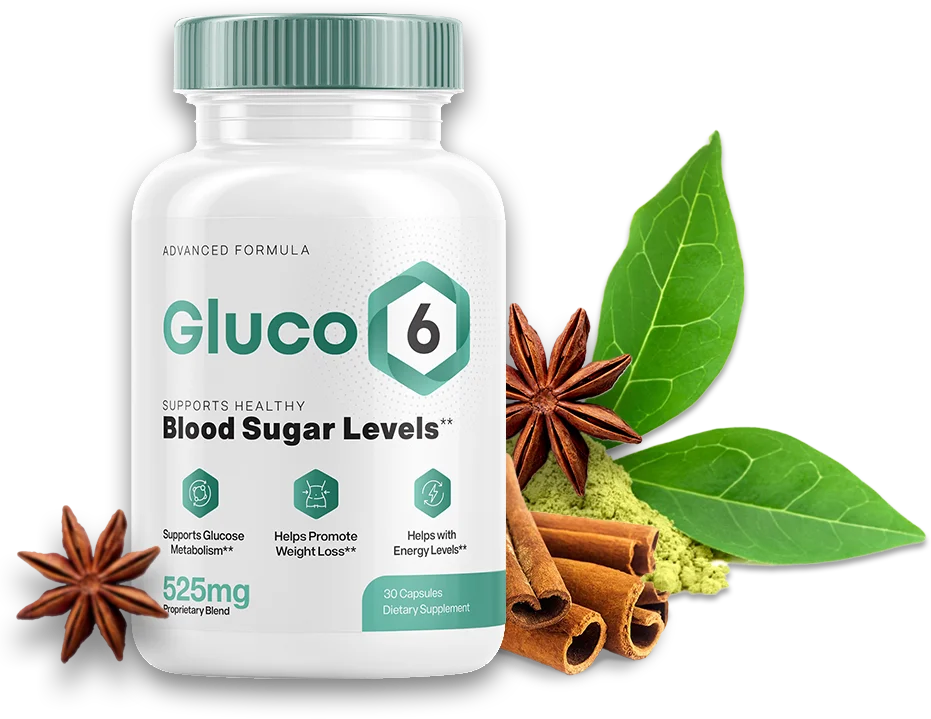Understanding the Role of HDL and LDL in Diabetes Control
Did you know that managing your cholesterol level could play a critical role in controlling blood sugar? For those living with diabetes, understanding this connection is essential for overall health.
High levels of ldl cholesterol can increase the risk of heart disease, while low levels of protective cholesterol may leave you vulnerable. Regular monitoring and lifestyle adjustments can make a significant difference.
Consulting a healthcare professional before making any changes is crucial. This ensures your approach is safe and effective for your unique needs.
Table of Contents
Key Takeaways
- Cholesterol levels are vital for managing diabetes effectively.
- High LDL cholesterol increases heart disease risk.
- Regular testing helps track progress and adjust treatments.
- Lifestyle changes can improve cholesterol and blood sugar levels.
- Always consult a doctor before starting new health routines.
Understanding Cholesterol: HDL, LDL, and Triglycerides
Cholesterol plays a vital role in your body’s overall function. It helps build cells and produce hormones. However, not all cholesterol is the same. Knowing the difference between its types can help you maintain better health.
Defining HDL and LDL Cholesterol
HDL, or high-density lipoprotein, is often called “good” cholesterol. It helps remove excess cholesterol from your bloodstream, reducing the risk of plaque buildup in arteries. On the other hand, LDL, or low-density lipoprotein, is known as “bad” cholesterol. High levels of LDL can lead to arterial blockages, increasing the risk of heart disease.
Maintaining a healthy balance between HDL and LDL is crucial. Research shows that dietary changes, like reducing saturated fat intake, can significantly lower LDL levels. Regular monitoring of your cholesterol level ensures you stay on track.
The Role of Triglycerides in Your Health
Triglycerides are another type of fat found in your blood. They store energy from the food you eat. High triglyceride levels, often linked to excessive calorie intake, can increase the risk of heart problems. Studies suggest that managing your triglyceride level through diet and exercise is essential for overall wellness.
By understanding these components, you can take proactive steps to improve your health. Balanced cholesterol levels not only protect your heart but also support your body’s vital functions.
How does hdl and ldl cholesterol affect diabetes
Abnormal cholesterol levels can complicate diabetes management significantly. For a person with diabetes, maintaining balanced blood sugar is already a challenge. Adding high LDL or low HDL into the mix can make it even harder. These changes in cholesterol levels directly affect your overall health.
Research shows that diabetes often leads to smaller, denser LDL particles. These particles are more likely to clog arteries, increasing cardiovascular risk. This effect is particularly concerning for those already managing blood sugar levels. Monitoring your cholesterol is essential to avoid these complications.
Exploring the Direct Relationship
Different types of cholesterol play unique roles in diabetes control. High LDL levels can worsen insulin resistance, making blood sugar harder to manage. On the other hand, low HDL levels reduce your body’s ability to remove excess cholesterol. This imbalance can lead to long-term health issues.
Even small changes in your cholesterol levels can have a significant effect. For example, reducing LDL by just 10% can lower your risk of heart disease. Similarly, increasing HDL can improve your body’s ability to process blood sugar. Regular monitoring and proactive adjustments are key to staying healthy.
If you have diabetes, understanding this connection is crucial. Work with your healthcare provider to create a plan that addresses both blood sugar and cholesterol. This dual focus will help you maintain better control over your health.
Diabetic Dyslipidemia: Implications for Heart Health
Living with diabetes often means paying extra attention to your lipid profile. Diabetic dyslipidemia is a condition where your lipid levels are imbalanced, increasing your risk for cardiovascular issues. This imbalance typically involves low HDL, high LDL, and elevated triglycerides.
What Diabetic Dyslipidemia Means
Diabetic dyslipidemia is a common issue for those with diabetes. It’s characterized by low levels of “good” cholesterol and high levels of “bad” cholesterol. This imbalance can lead to plaque buildup in arteries, raising the risk of heart disease.
Studies show that this condition is more prevalent in people with diabetes. Managing it effectively can reduce complications and improve overall health.
Risks for Cardiovascular Disease
Diabetic dyslipidemia significantly increases the risk of cardiovascular disease. High LDL levels can clog arteries, while low HDL fails to remove excess cholesterol. This combination creates a dangerous environment for your heart.
Research indicates that people with diabetes are two to four times more likely to develop heart disease. Early detection and management of dyslipidemia are crucial to lowering this risk.
Proactive steps, like regular monitoring and lifestyle changes, can make a big difference. Working with your healthcare provider ensures you stay on track for better heart health.
Dietary Approaches to Lower Cholesterol and Manage Diabetes
Your diet plays a powerful role in managing both blood sugar and lipid levels. By making informed food choices, you can significantly improve your health. Research shows that a balanced diet can reduce LDL levels by up to 33% in just one month.
Nutritional Strategies for Balancing Levels
Focus on whole foods like fruits, vegetables, and whole grains. These are rich in fiber, which helps lower high cholesterol. Studies suggest that consuming 10 to 25 grams of soluble fiber daily can make a noticeable difference.
Limit your intake of saturated fat to no more than 5% of your daily calories. Replace unhealthy fats with heart-healthy options like olive oil or avocado. Small changes can lead to big results over time.
Foods to Embrace and Foods to Avoid
Incorporate foods like salmon, blueberries, and nuts into your meals. These are packed with nutrients that support both blood sugar and lipid management. “A diet rich in whole foods is a cornerstone of good health,” says the American Diabetes Association.
Avoid processed foods high in sugar and trans fats. These can spike your blood sugar and increase your total cholesterol. Instead, opt for fresh, natural ingredients that nourish your body.
By following these dietary tips, you can take control of your health. Regular monitoring and adjustments ensure you stay on the right track.
Exercise and Lifestyle: Boosting HDL and Reducing LDL
Regular physical activity is a game-changer for improving your health. It not only helps manage blood sugar but also plays a vital role in balancing your lipid levels. By incorporating movement into your routine, you can naturally boost HDL and lower LDL.
The Impact of Aerobic Activity
Aerobic exercise, like brisk walking or biking, directly influences your lipid profile. Studies show it increases HDL levels while reducing LDL. The American Heart Association recommends at least 150 minutes of moderate-intensity activity weekly for optimal results.
Setting a clear goal is essential. Start with small steps, like a 30-minute walk five times a week. Over time, these habits can lead to significant improvements. Consistency is key—even moderate exercise every year can make a difference.
Lifestyle changes go beyond exercise. Pairing physical activity with a balanced diet enhances its benefits. This combination supports long-term heart health and diabetes management. The American Heart guidelines emphasize the importance of a holistic approach.
Remember, every step counts. Whether it’s a brisk walk or a bike ride, staying active is one of the best decisions you can make for your health.
Medical Interventions: When Lifestyle Changes Aren’t Enough
When lifestyle adjustments fall short, medical interventions can provide the necessary support. For many, diet and exercise alone may not fully address health concerns. This is especially true for those managing diabetes and lipid levels.

Medications and Their Functions
Statins are commonly prescribed to lower high cholesterol. They work by reducing the production of lipids in the liver. According to the American Heart Association, these medications can significantly reduce the risk of heart disease.
Other options include absorption inhibitors, which limit the amount of cholesterol your body absorbs. These medications are often recommended for individuals with specific risk factors, such as age or family history. Always consult your doctor to determine the best treatment for your needs.
Guidance on Consultations with Your Doctor
Effective communication with your healthcare provider is crucial. Discuss your cholesterol levels, blood sugar, and any concerns you may have. The heart association emphasizes the importance of regular check-ups to monitor progress.
Your doctor will consider factors like age, overall health, and risk factors before recommending treatment. This ensures your plan is tailored to your unique situation. Never start or stop medications without professional advice.
- Understand when medications are necessary alongside lifestyle changes.
- Learn about the functions of cholesterol-lowering drugs, including statins.
- Communicate effectively with your doctor about your health concerns.
- Consider risk factors like age and family history in your treatment plan.
- Always seek clinical advice before making significant health changes.
Medical interventions can be a vital part of your health journey. By working closely with your doctor, you can achieve better control over your cholesterol and blood sugar levels.
Natural Strategies for Balancing Blood Sugar and Cholesterol
Natural solutions can complement traditional methods for better health outcomes. Research shows that certain supplements and remedies provide additional support for managing blood sugar and lipid levels. These strategies can be integrated into your existing routine for enhanced results.
Leveraging Natural Products for Supplementary Control
Several natural factors have been shown to reduce LDL cholesterol levels. For example, soluble fiber found in oats and beans can lower LDL by binding to it in the digestive system. Studies suggest that consuming 10 to 25 grams of soluble fiber daily can make a noticeable difference.
Healthy fats, like those in avocados and olive oil, are another key factor. They not only reduce LDL but also improve HDL levels. Incorporating these into your diet can support both heart health and blood sugar control.
Supplements such as plant sterols and stanols can also help. These compounds block the absorption of cholesterol in the intestines. Adding them to your regimen may lower LDL levels by up to 10%.
| Natural Product | Benefits | Impact on mg/dl |
|---|---|---|
| Soluble Fiber | Reduces LDL cholesterol | Decrease by 5-10 mg/dl |
| Healthy Fats | Improves HDL and lowers LDL | Increase HDL by 3-5 mg/dl |
| Plant Sterols | Blocks cholesterol absorption | Decrease LDL by 7-10 mg/dl |
Practical advice includes starting with small changes. For instance, swap processed snacks for nuts or seeds. These are rich in healthy fats and fiber, making them a heart-healthy choice.
Monitoring your progress is essential. Regular blood tests can track changes in your mg/dl readings. This data helps you and your healthcare provider adjust your plan as needed.
Always consult your doctor before adding new supplements or making significant changes. They can ensure these strategies align with your overall health goals.
Natural strategies offer a supplementary approach to managing your health. By combining these methods with traditional treatments, you can achieve better control over your blood sugar and lipid levels.
Monitoring Your Cholesterol Levels and Understanding Lab Results
Understanding your lab results can empower you to take control of your health. Regular testing and interpreting your lipid profile are essential steps in managing your wellness. By staying informed, you can make better decisions about your lifestyle and treatment plans.

Recommended Testing Frequency
The National Library of Medicine and the CDC recommend testing your lipid levels every 4-6 years for most adults. However, if you have diabetes or other risk factors, annual testing may be necessary. This ensures your mg/dl levels stay within a healthy range.
Regular monitoring helps detect changes early. It also allows your healthcare provider to adjust your treatment plan as needed. Staying proactive with testing is a key part of maintaining your long-term health.
Decoding Your Blood Test Results
Your lipid profile includes several key metrics, each measured in mg/dl. Here’s what they mean:
- Total Cholesterol: Less than 200 mg/dl is considered normal. Levels above 240 mg/dl are high and require attention.
- LDL Cholesterol: Optimal levels are below 100 mg/dl. Higher levels increase your risk of heart disease.
- HDL Cholesterol: Levels above 60 mg/dl are protective. Below 40 mg/dl is a concern.
- Triglycerides: Normal levels are below 150 mg/dl. Levels above 200 mg/dl are high and may require intervention.
Understanding these numbers helps you and your doctor create a personalized plan. It also highlights areas where lifestyle changes or medications may be needed.
Tracking your results over the year is crucial. Keep a record of your mg/dl levels to monitor progress. This data can guide your decisions and ensure you stay on the right path.
Regular testing and understanding your lab results are vital for your health. By staying informed, you can take proactive steps to manage your wellness effectively.
Incorporating Heart-Healthy Habits into Your Daily Routine
Small, consistent changes in your daily routine can significantly improve your heart health. By adopting heart-healthy habits, you can better manage your mg/dl levels and reduce overall risk. The CDC and the American Heart Association emphasize the importance of these practices for long-term wellness.
Smoking Cessation and Alcohol Management
Quitting smoking is one of the most impactful steps you can take. Smoking damages blood vessels and raises bad cholesterol levels, increasing heart disease risk. Studies show that stopping smoking can improve your mg/dl readings within months.
Moderating alcohol intake is equally important. Excessive drinking can lead to high triglycerides and other health issues. The American Heart Association recommends no more than one drink per day for women and two for men.
Integrating Consistent Physical Activity
Regular exercise is a cornerstone of heart health. Activities like brisk walking, cycling, or swimming can boost HDL levels while lowering LDL. Aim for at least 150 minutes of moderate-intensity exercise weekly.
Even small changes, like taking the stairs or walking during breaks, can make a difference. Consistency is key—find activities you enjoy to stay motivated.
Before making significant changes, consult your healthcare provider. They can help tailor a plan that’s safe and effective for your unique needs. By taking these steps, you can build habits that support your heart and overall health.
Conclusion
Balancing your health requires attention to both blood sugar and lipid levels. Regular testing and proactive management are essential for long-term wellness. Combining a healthy diet, consistent exercise, and medical interventions when needed can make a significant difference.
Natural products can also play a supportive role in maintaining balanced levels. These solutions, when used alongside traditional methods, offer additional benefits for your overall well-being. Always consult your doctor before making any major changes to your routine.
Taking these steps ensures you stay informed and in control of your health. Your journey to better wellness starts with understanding and action.
FAQ
What is the difference between HDL and LDL cholesterol?
HDL, or high-density lipoprotein, is known as “good” cholesterol because it helps remove LDL, or low-density lipoprotein, from your arteries. LDL is often called “bad” cholesterol because high levels can lead to plaque buildup and increase your risk of heart disease.
How do triglycerides affect my health?
Triglycerides are a type of fat in your blood. High levels can increase your risk of heart disease, especially when combined with low HDL or high LDL levels. Managing triglycerides through diet, exercise, and medication is crucial for overall health.
What is diabetic dyslipidemia, and why is it concerning?
Diabetic dyslipidemia is a condition common in people with diabetes, characterized by high triglycerides, low HDL, and high LDL. It significantly raises the risk of cardiovascular disease, making it essential to manage cholesterol levels carefully.
What foods should I eat to lower cholesterol and manage diabetes?
Focus on whole, unprocessed foods like fruits, vegetables, whole grains, lean proteins, and healthy fats. Avoid saturated fats, trans fats, and sugary foods, as they can worsen cholesterol levels and blood sugar control.
How does exercise help improve cholesterol levels?
Regular aerobic activity, such as walking, swimming, or cycling, can raise HDL levels and lower LDL and triglycerides. Aim for at least 150 minutes of moderate exercise per week for optimal benefits.
When should I consider medication for cholesterol management?
If lifestyle changes alone don’t improve your cholesterol levels, your doctor may prescribe medications like statins. Always consult your healthcare provider to determine the best treatment plan for your needs.
How often should I get my cholesterol levels checked?
The American Heart Association recommends testing every 4 to 6 years for adults over 20. If you have diabetes or other risk factors, your doctor may suggest more frequent testing.
What lifestyle habits can support heart health?
Quit smoking, limit alcohol intake, and maintain regular physical activity. These habits can improve cholesterol levels, manage blood sugar, and reduce your risk of heart disease.
Can natural products help balance blood sugar and cholesterol?
Some natural products, like omega-3 fatty acids, fiber supplements, and plant sterols, may support cholesterol and blood sugar control. However, always consult your doctor before adding supplements to your routine.
How do I interpret my cholesterol lab results?
Your results will show total cholesterol, HDL, LDL, and triglyceride levels. Ideal ranges include total cholesterol under 200 mg/dL, HDL above 60 mg/dL, LDL under 100 mg/dL, and triglycerides under 150 mg/dL. Discuss your results with your doctor for personalized guidance.
How useful was this post?
Click on a star to rate it!
Share this article:
Meet Gluco 6
Blood sugar balance supplement
Tired of Type-2 controlling your life or worried that persistent high blood sugar may turn into something worse? Then yes, Gluco6 is right for you.
Gluco6 has already provided amazing blood sugar assistance for men and women in their 30s, 40, 50s and even 80s. Because it was formulated based on cutting-edge science and groundbreaking ingredients, Gluco6 is engineered to rapidly assist even the most erratic blood sugar levels.






